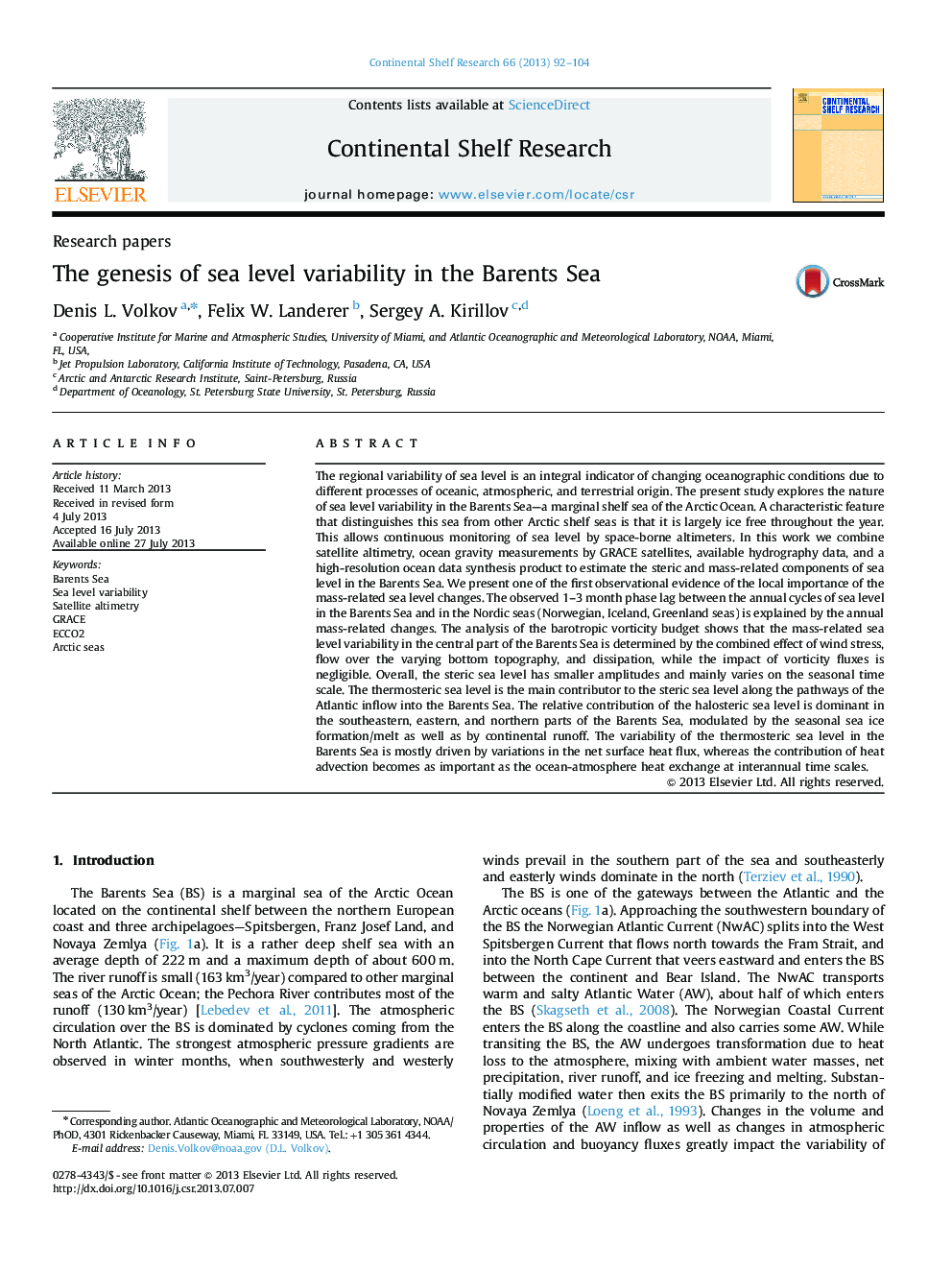| کد مقاله | کد نشریه | سال انتشار | مقاله انگلیسی | نسخه تمام متن |
|---|---|---|---|---|
| 6383288 | 1626146 | 2013 | 13 صفحه PDF | دانلود رایگان |
عنوان انگلیسی مقاله ISI
The genesis of sea level variability in the Barents Sea
ترجمه فارسی عنوان
پیدایش تغییرات سطح دریا در دریای بارنت
دانلود مقاله + سفارش ترجمه
دانلود مقاله ISI انگلیسی
رایگان برای ایرانیان
کلمات کلیدی
موضوعات مرتبط
مهندسی و علوم پایه
علوم زمین و سیارات
زمین شناسی
چکیده انگلیسی
The regional variability of sea level is an integral indicator of changing oceanographic conditions due to different processes of oceanic, atmospheric, and terrestrial origin. The present study explores the nature of sea level variability in the Barents Sea-a marginal shelf sea of the Arctic Ocean. A characteristic feature that distinguishes this sea from other Arctic shelf seas is that it is largely ice free throughout the year. This allows continuous monitoring of sea level by space-borne altimeters. In this work we combine satellite altimetry, ocean gravity measurements by GRACE satellites, available hydrography data, and a high-resolution ocean data synthesis product to estimate the steric and mass-related components of sea level in the Barents Sea. We present one of the first observational evidence of the local importance of the mass-related sea level changes. The observed 1-3 month phase lag between the annual cycles of sea level in the Barents Sea and in the Nordic seas (Norwegian, Iceland, Greenland seas) is explained by the annual mass-related changes. The analysis of the barotropic vorticity budget shows that the mass-related sea level variability in the central part of the Barents Sea is determined by the combined effect of wind stress, flow over the varying bottom topography, and dissipation, while the impact of vorticity fluxes is negligible. Overall, the steric sea level has smaller amplitudes and mainly varies on the seasonal time scale. The thermosteric sea level is the main contributor to the steric sea level along the pathways of the Atlantic inflow into the Barents Sea. The relative contribution of the halosteric sea level is dominant in the southeastern, eastern, and northern parts of the Barents Sea, modulated by the seasonal sea ice formation/melt as well as by continental runoff. The variability of the thermosteric sea level in the Barents Sea is mostly driven by variations in the net surface heat flux, whereas the contribution of heat advection becomes as important as the ocean-atmosphere heat exchange at interannual time scales.
ناشر
Database: Elsevier - ScienceDirect (ساینس دایرکت)
Journal: Continental Shelf Research - Volume 66, 1 September 2013, Pages 92-104
Journal: Continental Shelf Research - Volume 66, 1 September 2013, Pages 92-104
نویسندگان
Denis L. Volkov, Felix W. Landerer, Sergey A. Kirillov,
